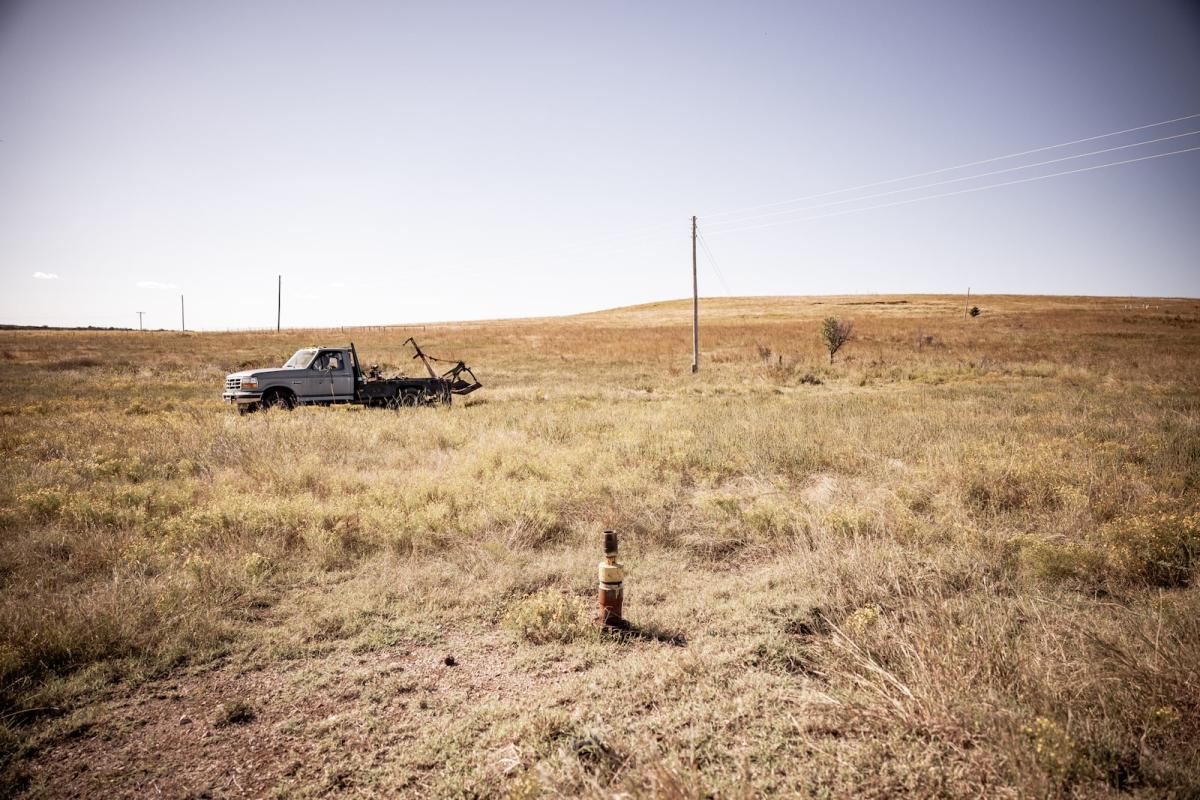This story was produced in partnership with Osage News.
The sun wasn’t quite high in the Oklahoma sky when Nona and Wayne Roach piled into their old pickup truck, their teenage granddaughter Shaylee perched in the back. It was a hot September morning, but Osage County is known for searing summer temperatures that stretch into the fall. The heat and the hot air swirled around the two-lane road to their horses and cattle.
The Roaches have about 160 acres just outside the tiny town of Avant — population 320 — in the eastern part of Osage County, land that Wayne has worked since the mid-1970s and that his family has owned since the 1930s. He’s a former steer roper who lost two fingers trying to rope a calf on a bet in nearby Nelagoney. His grandfather gave him a calf a year, which is how he got his start.
The terrain is rock-ribbed and full of bluestem prairie, long grasses that are good for grazing livestock. The landscape is graced by bois d’arc trees, sometimes known as Osage orange or horse a... Read more


